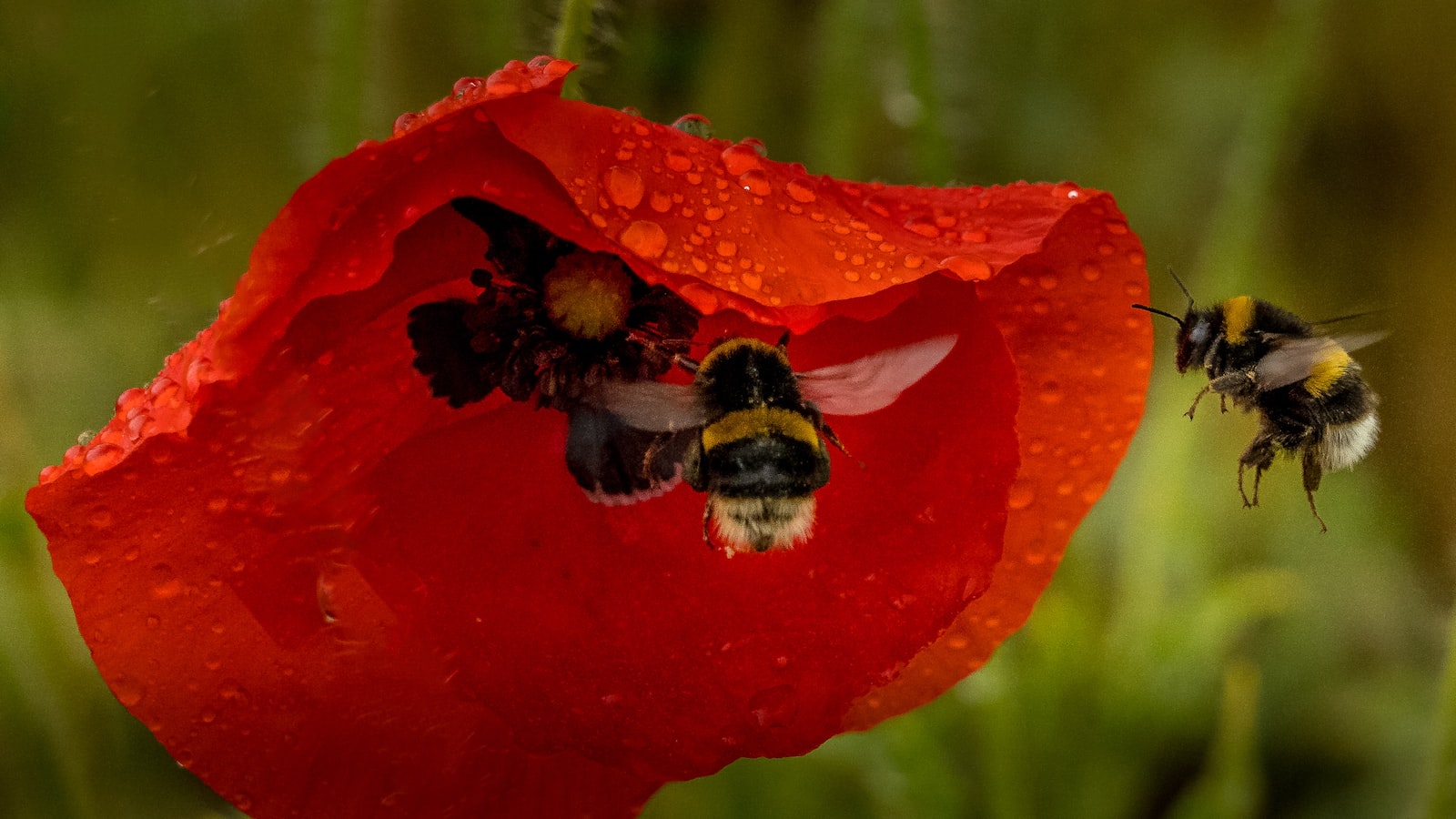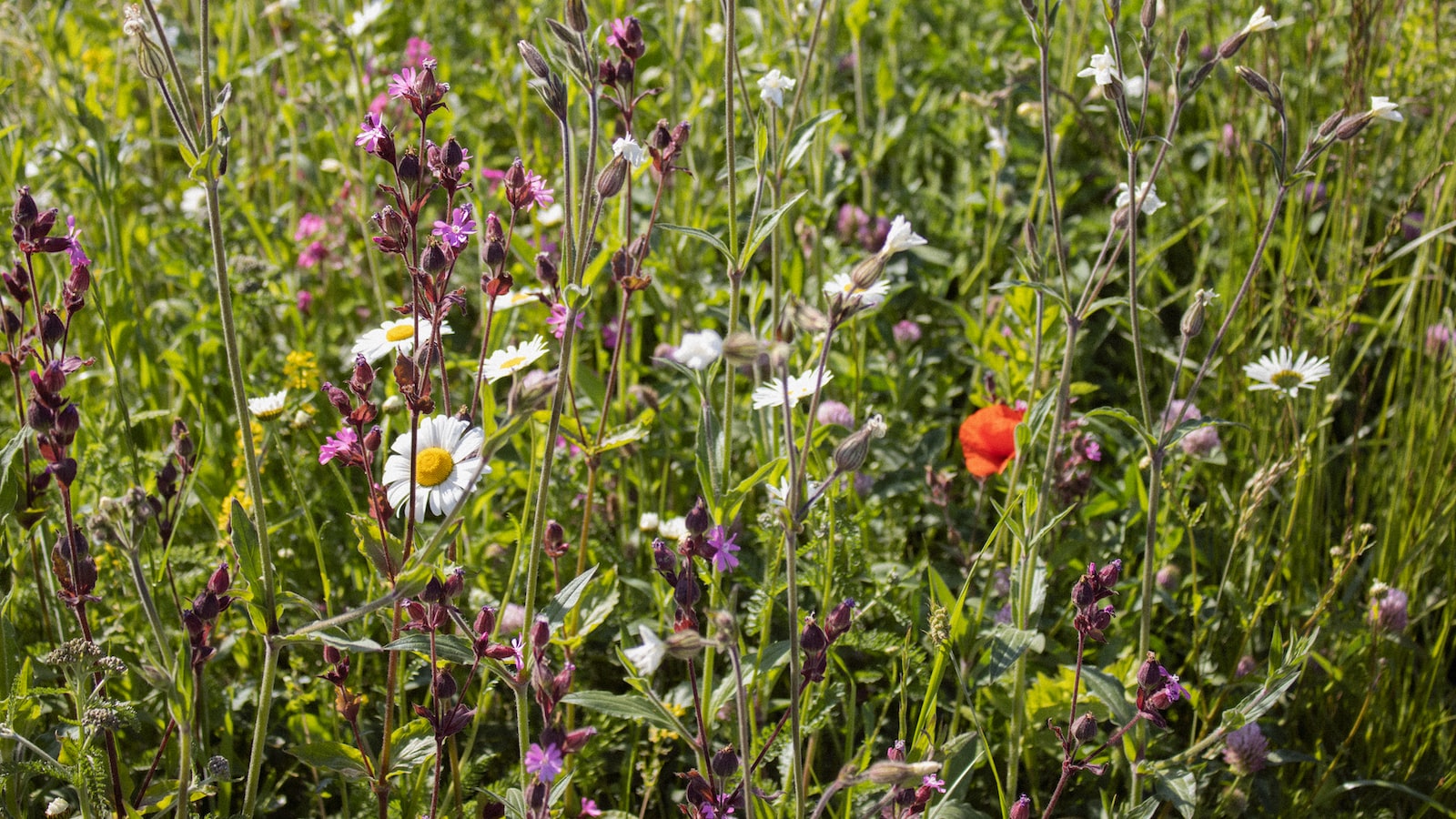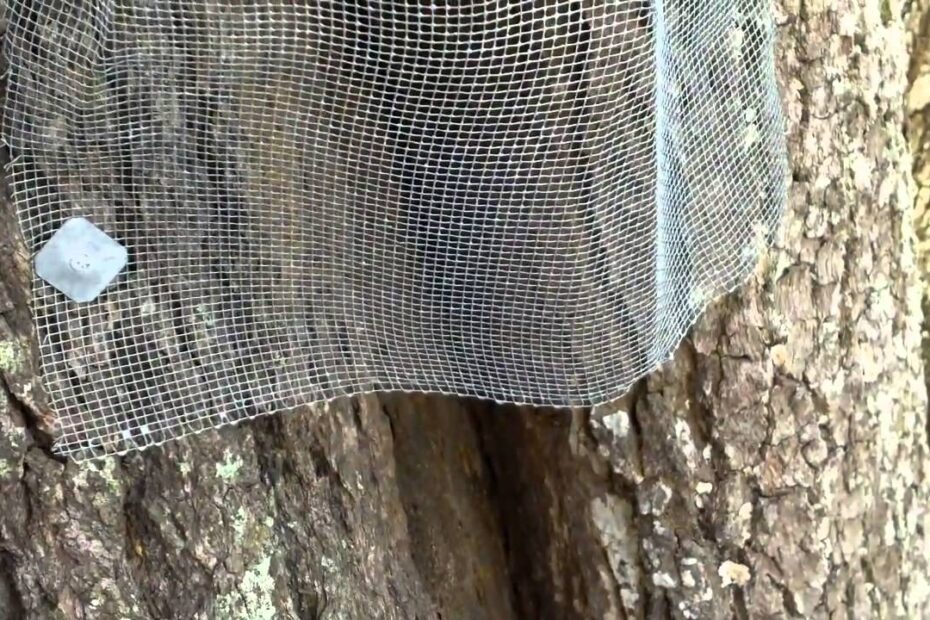Starstruck by the beauty of nature’s intricate creation, honey bees have chosen to make a majestic tree their buzzing abode. As they harmonize in perfect unison, gathering the nectar that gifts us with their golden elixir, this arboreal dwelling seems like a harmonious haven. Yet, as fate would have it, circumstances may arise where the serenity of this coexistence becomes a bit too close for comfort. Alas, fear not, for in this captivating article, we shall uncover the art of delicately and respectfully coaxing these industrious insects out of their beloved arboreal sanctuary. With a dash of finesse and a sprinkle of empathy, we shall explore the secrets to successfully relocating our honey bee friends from their lofty canopy to a new utopia, without causing them or us any harm. So, let us embark on this transformative journey of discovery, as we learn how to usher these airborne artists out of a tree with grace and gentility.
Understanding the Behavior of Honey Bees and Their Connection to Trees
When honey bees decide to make their home in a tree on your property, it can be both fascinating and concerning. While they play a crucial role in pollination and honey production, having a swarm of bees near your home may not be ideal. So, how exactly can you safely relocate honey bees from a tree without causing harm to them or yourself? Let’s delve into the behavior of honey bees and explore the connection between these incredible creatures and the trees they choose to inhabit.
Honey bees are highly organized insects that live in colonies. Their primary goal is to ensure the survival and well-being of their hive. When a swarm of bees finds a suitable tree, they send out scout bees to examine potential nesting sites. Once a site is chosen, worker bees begin constructing the comb and storing honey. It’s important to understand that honey bees are usually not aggressive unless they feel threatened or their hive is disturbed.
To safely remove honey bees from a tree, it’s best to contact a local beekeeper or a professional bee removal service. They have the necessary skills and equipment to ensure the safe relocation of the bees. However, if you’re considering removing the bees yourself, keep the following features and tips in mind:
| Features/Tips | Description |
| Protective Clothing | Wear a beekeeping suit, gloves, and a veil to protect yourself from potential stings. |
| Smoker | Use a smoker to calm the bees and make them less aggressive during the removal process. |
| Gentle Approach | Handle the bees with care and avoid sudden movements that may agitate them further. |
Remember, relocating honey bees should be done with caution and respect for the well-being of both the bees and yourself.

Assessing the Situation: Identifying the Bee Colony and Evaluating the Tree
Once you spot a swarm of honey bees near a tree, it’s important to assess the situation before taking any action. Identifying the bee colony and evaluating the tree are crucial steps towards effectively removing the bees. To start, observe the size, behavior, and location of the swarm to determine if it is actually a honey bee colony. Look for characteristics such as a cloud-like formation, a distinct buzzing sound, and groups of bees clinging together.
After confirming the presence of honey bees, carefully evaluate the tree to determine the best approach for removal. Take note of the tree’s size, accessibility, and proximity to structures or people. Is the tree hollow or decaying? These factors can impact the ease and success of relocating the colony. Additionally, consider the environmental impact of removing the bees and the potential dangers involved. It may be necessary to seek professional help from experienced beekeepers or apiarists who specialize in safely removing and relocating honey bee colonies.
Features and Tips for Assessing the Situation:
| Features | Tips |
|---|---|
| Size of the swarm | – Use binoculars for a closer look |
| Behavior of the bees | – Watch for pollen-carrying bees returning to the swarm |
| Location of the swarm | – Avoid getting too close or disturbing the bees |
Features and Tips for Evaluating the Tree:
| Features | Tips |
|---|---|
| Size of the tree | – Assess if it requires professional assistance |
| Accessibility of the tree | – Ensure safe access for removal |
| Proximity to structures or people | – Consider potential risks during removal |

Environmentally-Friendly Approaches: Safely Relocating Honey Bees from Trees
It’s a common sight to see honey bees buzzing around trees, as they often make their hives in the branches. However, if you find yourself needing to remove a hive from a tree, it’s essential to take an environmentally-friendly approach. In this post, we’ll explore safe methods to relocate honey bees from trees, ensuring both the well-being of the bees and the preservation of our ecosystem.
One effective way to safely remove honey bees from a tree is by using a bee vacuum. This special device is designed to gently suck up the bees without harming them. By connecting the vacuum to a specialized container, the bees can be safely transported to a new location, such as a beekeeper’s hive or a designated area for honey bee colonies. This method allows the bees to continue their important work of pollination while ensuring their safety and the integrity of the tree.
| Features | Tips |
|---|---|
| 1. Bee vacuum | * Ensure the vacuum is designed specifically for bee removal to avoid injuring the bees. * Use the bee vacuum during the cooler hours of the day when bees are less active. * Release the bees in an appropriate location suitable for their survival. |
| 2. Relocation by hive split | * Contact a local beekeeper or experienced professional to assist with hive splitting. * Ensure the new hive location is suitable for the bees’ long-term survival. * Provide the bees with additional support, such as feeding, to aid their transition to the new hive. |
| 3. Luring with honeycomb | * Cut out a piece of honeycomb from the tree and place it in a suitable hive box. * Gradually move the hive box away from the tree to entice the bees to relocate. * Monitor the process closely to ensure the safety of the bees and successful relocation. |
Remember, honey bees play a vital role in our environment, pollinating plants and contributing to biodiversity. By adopting these environmentally-friendly approaches, we can relocate honey bees from trees safely, preserving their important role in our ecosystem.
Seeking Professional Assistance: Experts in Apiary Management and Bee Relocation
Are you in a sticky situation with a swarm of honey bees taking up residence in a tree? Fear not, for help is at hand! When it comes to safely removing and relocating honey bees, it is essential to seek the assistance of professionals who specialize in apiary management and bee relocation. These experts possess the knowledge, skills, and tools necessary to ensure the humane and effective removal of the bees while preserving their essential role in our ecosystem.
Here are some valuable features and tips to consider when seeking professional assistance for bee relocation:
| Features | Tips |
|---|---|
| Experience: | Look for professionals with extensive experience in beekeeping and bee relocation. Their expertise will ensure the successful relocation of the honey bees. |
| Eco-friendly Approach: | Choose experts who prioritize environmentally friendly methods. Bee relocation should be done in a way that minimizes harm to the bees and their natural habitat. |
| Protection Gear: | Ensure that the professionals use appropriate protective gear to safeguard themselves and anyone nearby during the relocation process. |
By enlisting the help of professionals specializing in apiary management and bee relocation, you can bid farewell to your uninvited buzzing guests while knowing that you have played a part in preserving these vital pollinators. So, don’t wait any longer – reach out to these experts and let them work their beemagic!
Frequently Asked Questions
Q: Why are honey bees attracted to trees in the first place?
A: Honey bees are naturally drawn to trees due to their need for shelter, protection, and proximity to nectar-rich flowers. The tree’s hollow trunk becomes an ideal place for a thriving honey bee colony, providing a secure and cozy home for these remarkable pollinators.
Q: What are some safe and humane methods to encourage honey bees to leave a tree?
A: Fortunately, there are a few gentle methods to convince honey bees to relocate peacefully. First, consider placing a beehive nearby, offering the bees an attractive alternative housing option. Additionally, installing a scent deterrent like lemongrass oil near the tree can sometimes encourage them to move on. It’s crucial to prioritize the well-being of the bees during this process, ensuring a responsible and compassionate approach.
Q: When should professional beekeepers be contacted for assistance?
A: While there are DIY methods to address honey bee colonies in trees, it’s essential to evaluate the situation and know when to seek professional help. If the tree is located near a high-traffic area or poses a danger to human activities, it’s advisable to contact a local beekeeper specializing in live hive relocation. Allow these experienced individuals to handle the delicate process, promoting the safe removal and relocation of the honey bee colony. As we bid adieu to our buzzing friends and their cozy tree abode, we hope you’ve found this guide both enlightening and whimsical. The secret life of honey bees is a fascinating tale indeed, and encountering these industrious creatures nestled within the branches of a tree can be quite the adventure. Remember, dear reader, that patience, respect, and a touch of ingenuity are the keys to ensuring a harmonious relocation for both bees and humans alike. So, next time you stumble upon a buzzing tree oasis, you need not fear. Armed with the knowledge gained from this humble guide, you possess the power to guide these tireless workers to a safer haven, all while nurturing a crucial pillar of our ecosystem. After all, as we navigate our ever-changing world, it is our symbiotic relationship with nature that will truly sustain us. Now, go forth and let your newfound expertise in the art of bee relocation weave wonderment throughout your endeavors. May the dance of these tiny pollinators continue to grace our landscapes and fill our pots with golden nectar for generations to come.
- When to Put Weed and Feed on Lawn in Michigan - October 16, 2023
- When to Fertilize Potatoes Plants - October 16, 2023
- Can You Plant Clover in the Spring - October 16, 2023
Contents
- 1 Understanding the Behavior of Honey Bees and Their Connection to Trees
- 2 Assessing the Situation: Identifying the Bee Colony and Evaluating the Tree
- 3 Environmentally-Friendly Approaches: Safely Relocating Honey Bees from Trees
- 4 Seeking Professional Assistance: Experts in Apiary Management and Bee Relocation
- 5 Frequently Asked Questions

